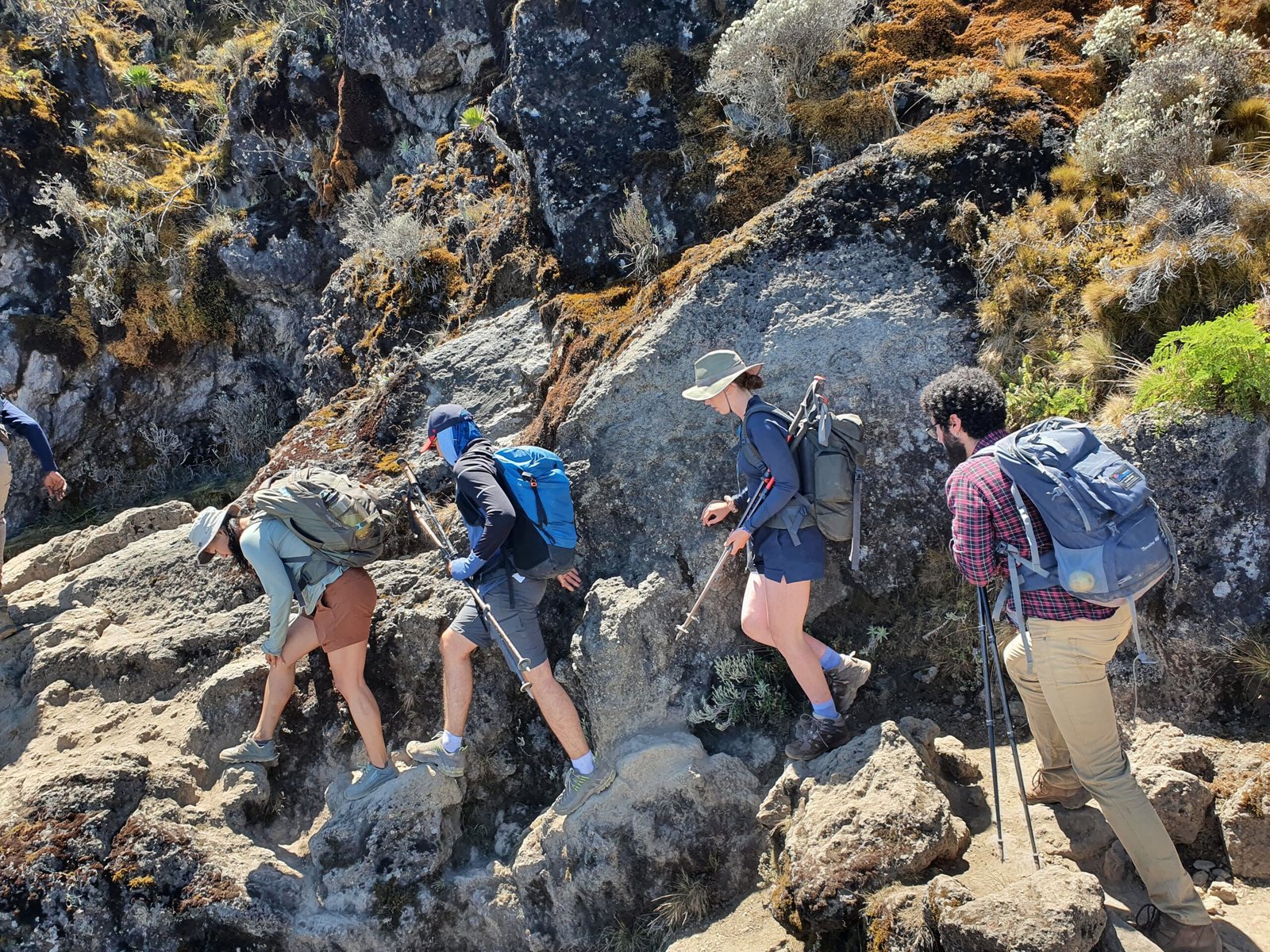The Best 7-Day Kilimanjaro Lemosho Route for 2025,2026,2027.
The Lemosho Route is widely regarded as one of the most scenic and less crowded paths to the summit of Mount Kilimanjaro. This route offers a longer ascent with more gradual slopes, making it perfect for those seeking a successful and enjoyable climb. In 2025, the 7-day version of the Lemosho Route remains one of the top choices for climbers who want the best balance between acclimatization, scenic beauty, and summit success.
Why Choose the 7-Day Kilimanjaro Lemosho Route?
Scenic Views: Known for its breathtaking scenery, the Lemosho Route traverses through a variety of ecosystems, including rainforests, moorlands, and alpine deserts. Expect spectacular views of Kilimanjaro’s glaciers and surrounding landscapes.
Lower Traffic: Unlike the busier Machame and Marangu routes, Lemosho offers a quieter, more remote experience with fewer climbers on the trail, especially in the early days of the trek.
High Success Rate: The 7-day Lemosho itinerary provides ample time for acclimatization, enhancing the chances of reaching the summit.
Diverse Wildlife: As you pass through the lower slopes, you may encounter wildlife such as monkeys, antelopes, and a wide variety of bird species, making the journey even more rewarding.

7-Day Lemosho Route Itinerary
Day 1: Lemosho Gate to Big Tree Camp
Elevation: 2,250m to 2,800m
Distance: 6km | 4 miles
Duration: 3-4 hours
The adventure begins with a scenic drive to Lemosho Gate, followed by a trek through the lush rainforest. The day ends at Big Tree Camp, located in the depths of the forest.
Day 2: Big Tree Camp to Shira 1 Camp
Elevation: 2,800m to 3,500m
Distance: 8km | 5 miles
Duration: 5-6 hours
As you ascend out of the forest, the landscape changes to heath and moorland. The Shira Plateau offers expansive views of the surrounding areas.
Day 3: Shira 1 Camp to Moir Hut (via Shira 2)
Elevation: 3,500m to 4,200m
Distance: 10km | 6 miles
Duration: 6-7 hours
You’ll continue across the Shira Plateau, passing through volcanic landscapes. This day is excellent for acclimatization as you gradually ascend to Moir Hut.
Day 4: Moir Hut to Barranco Camp (via Lava Tower)
Elevation: 4,200m to 3,950m (via 4,600m at Lava Tower)
Distance: 10km | 6 miles
Duration: 7-8 hours
A key acclimatization day, as you reach Lava Tower before descending to Barranco Camp. The views of the Western Breach and Barranco Valley are extraordinary.
Day 5: Barranco Camp to Karanga Camp
Elevation: 3,950m to 3,995m
Distance: 5km | 3 miles
Duration: 4-5 hours
The morning starts with a thrilling scramble up the Barranco Wall, followed by a more relaxed walk to Karanga Camp. This is another acclimatization day to prepare for the summit push.
Day 6: Karanga Camp to Barafu Camp
Elevation: 3,995m to 4,673m
Distance: 4km | 2 miles
Duration: 3-5 hours
A short but steady climb leads to Barafu Camp, your base for the final ascent to the summit. Rest early, as the summit push begins just after midnight.
Day 7: Barafu Camp to Summit to Mweka Camp
Elevation: 4,673m to 5,895m (Uhuru Peak) to 3,067m
Distance: 17km | 11 miles
Duration: 12-16 hours
The most challenging but rewarding day of the trek! You’ll start the final ascent around midnight and reach Uhuru Peak at sunrise. After celebrating at the summit, descend to Mweka Camp for your last night on the mountain.
Inclusions
All transfers to the mountain and back to your Moshi hotel
Professional, experienced, mountain guides
Guides, Porters, Cook salaries and park fees
Quality, waterproof, four-season mountain sleeping tents (on twin sharing basis)
Sleeping Mattress
Emergency Oxygen Cylinder
All meals while on the Mountain
Quality Mess tents with table and chairs
Large portions of fresh, healthy, nutritious food
Clean, purified drinking water
Conservation fees (part of park fees)
Camping or Hut fees (part of park fees)
Rescue fees (part of park fees)
VAT (18% charged by the Government)
Kilimanjaro summit certificate
Exclusions
Tanzania Visa
International and domestic flights
Hotel (available as an optional addon)
Transfers (available as an optional addon)
Personal trekking equipment such as sleepings bags, hiking boots, clothes, etc (available for renting)
Tips and gratuities
Travel insurance
Personal Expenses (e.g. laundry, telephone, beverages, etc.)
Meals not listed in the itinerary
Liquors, beers and bottled beverages
Surcharge for online payment of advance and balance (5% on each payment)
FAQs About the 7-Day Kilimanjaro Lemosho Route
What is the difficulty level of the Lemosho Route?
The Lemosho Route is moderately difficult, with steady ascents and good acclimatization opportunities. It’s one of the best routes for climbers seeking a balanced challenge.
What is the difference between the 7-day and 8-day Lemosho itinerary?
The 7-day itinerary is a day shorter, making it more challenging as there’s less time to rest, but it still offers good acclimatization.
What is the best time to climb the Lemosho Route in 2025?
The best time is during the dry seasons, from January to March and from June to October, to avoid heavy rains and slippery conditions.
Is the Lemosho Route crowded?
The Lemosho Route is less crowded than other routes like Machame or Marangu, especially in the first few days, offering a more peaceful climb.
Book Your 7-Day Kilimanjaro Lemosho Route Trek for 2025!
Secure your

